Vitamin E Acetate Analysis in Vaping Solution
Bruce Herzig, Katherine Stenerson
Section Overview
Introduction
E-cigarette or vaping use associated lung injury, known as “EVALI”, is a sometimes-fatal condition which garnered public attention after a sharp increase in cases in August/September of 2019. EVALI was linked with the use of informally produced cannabis derived e-cigarettes and vaping products containing vitamin E acetate (tocopherol acetate), which was added as a thickening agent. 1,2 When present in foods, nutritional supplements, or topical preparations such as creams and lotions, vitamin E acetate does not pose a health risk. However, it is not recommended for use in vaping products, as stated by the CDC.2 Proper testing for vitamin E acetate in these products requires the use of a method that will selectively detect this compound free of other matrix components in the vaping solution, such as cannabinoids and possibly vitamin E (tocopherol) isomers. This application demonstrates the HPLC separation and quantitation of vitamin E acetate from a commercially available vape product by dilution of the sample followed by direct injection HPLC analysis. For the purpose of this application, a nicotine vape juice was spiked with vitamin E acetate, delta-8 and delta-9-tetrahydrocannabinol (Δ-8-THC, Δ-9-THC), and cannabidiol (CBD). This was done to demonstrate usefulness of the method for analysis of vitamin E acetate in actual THC or CBD contaning vape products, and to investigate the possibility of performing a simultaneous analysis of each of these compounds in the same run.
Experimental Conditions
The final HPLC method conditions used are listed in Table 1. Samples were prepared by diluting 1 gm of a nicotine vaping solution into 20 mL of water. Spiked samples (50 µg/mL) were prepared by addition of vitamin E acetate to the diluted vaping solution. These spikes were quantitated against a 5-point calibration curve (5-200 µg/mL) of vitamin E acetate in methanol.
Results & Discussion
In addition to the analysis of vitamin E acetate, another goal of the method was the concurrent analyses of THC and CBD in the same HPLC run, and separation from vitamin E isomers (α, γ and δ – tocopherols). Diluted nicotine vaping solution was spiked with these compounds and evaluated on two different HPLC columns; the Ascentis® Express C18 and Ascentis® Express C30, using gradient conditions optimized for each column. Ascentis® Express columns are based on Fused-Core® Technology and were chosen for this work because of their ability to provide high efficiency and resolution on both UHPLC and standard HPLC systems. While C18 is a popular phase chemistry for cannabis analysis, the C30 column provided slightly better resolution of the Δ-8 / Δ-9 THCs and an overall shorter run time (Figure 1). The C30 chemistry has been shown to exhibit selectivity for structurally related isomers, and under the gradient conditions described, provided partial resolution of δ/α-Tocopherol. Under isocratic conditions with 100% methanol, these vitamin E isomers can be baseline resolved (data not shown), making it possible to accurately quantitate these compounds if desired.
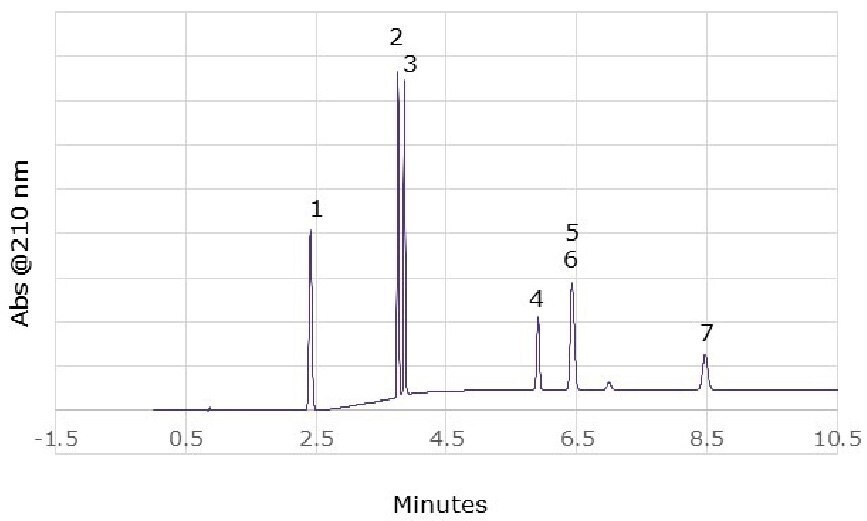
Peak IDs
- Cannabidiol (CBD)
- Delta-9-Tetrahydrocannabinol (Δ-9-THC)
- Delta-8-Tetrahydrocannabinol (Δ-8-THC)
- γ-Tocopherol
- δ-Tocopherol
- α-Tocopherol
- Tocopherol acetate (Vitamin E acetate)
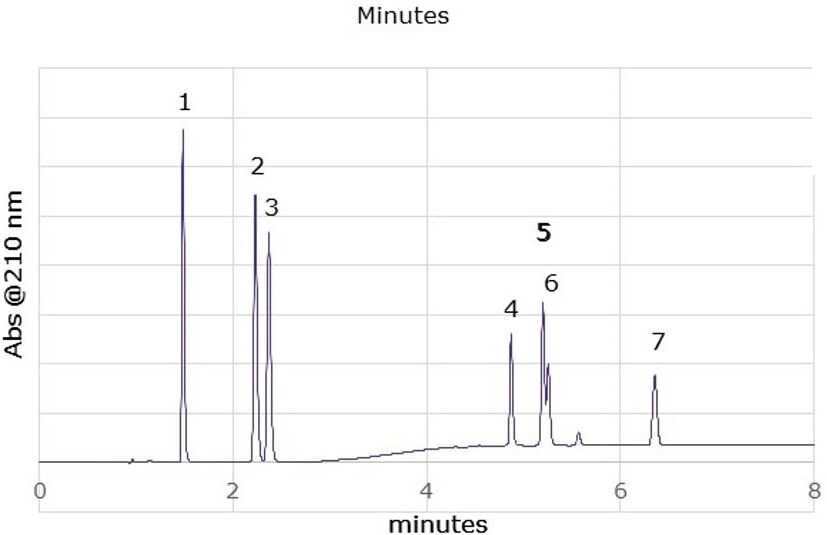
Figure 1.Comparison of spiked nicotine vaping solution analyzed on Ascentis® Express C18 and Ascentis® Express C30 columns
Figure 2 shows the analysis of the unspiked nicotine vaping solution compared to a solution spiked with vitamin E acetate, Δ-9-THC and CBD. No vitamin E acetate was detected in the unspiked sample. Accuracy of the spiked samples is summarized in Table 2. The accuracies of the Vitamin E acetate measured in the spikes were 91 and 101% respectively. CBD and Δ-9-THC were added to the second spike, and the measured values had accuracies of 91% and 95% when compared to the known spiking level of 50 µg/mL.
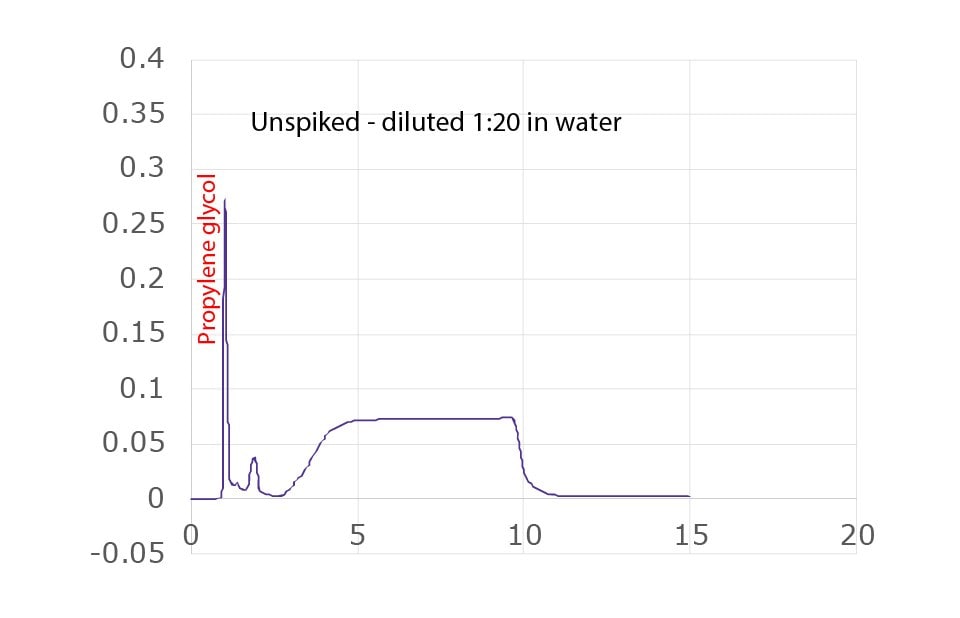
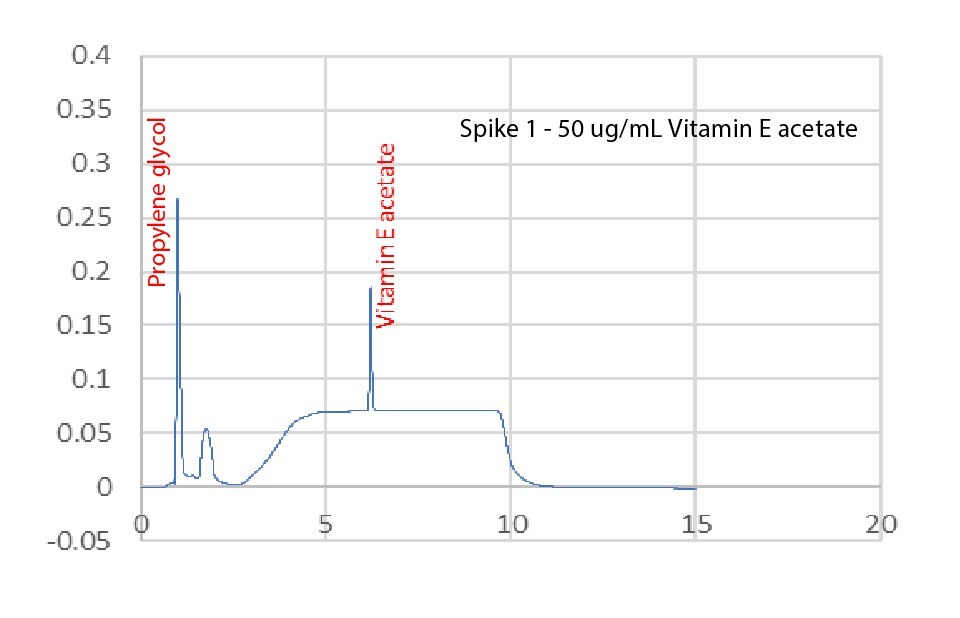
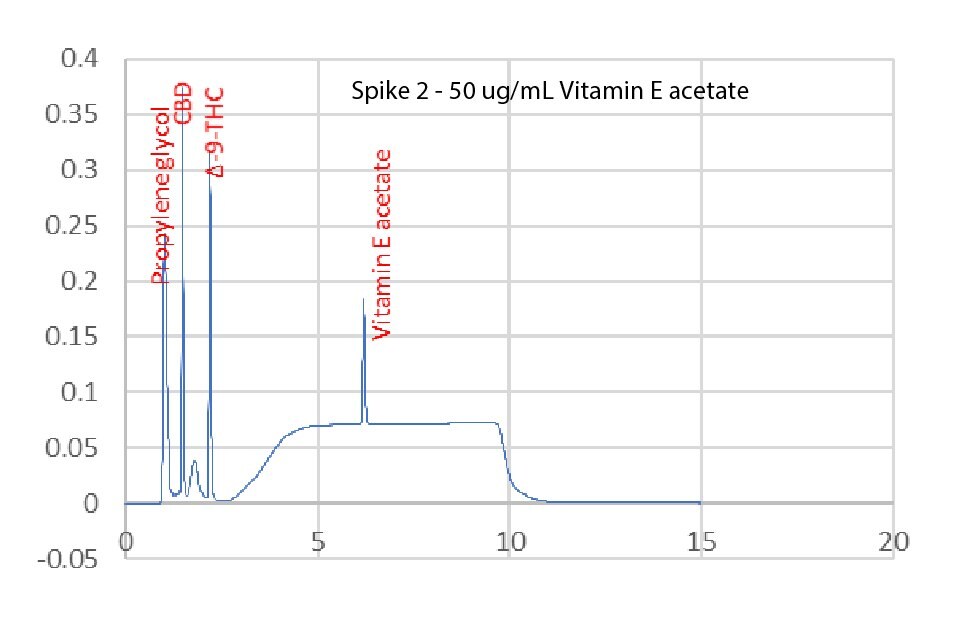
Figure 2.HPLC analysis of unspiked and spiked nicotine vaping solutions.
Conclusions
HPLC is the recommended method for analysis of vitamin E acetate in vaping solution. As demonstrated here, the Ascentis® Express C30 column can be used for this application, with the possibility of a single-run simultaneous analysis of cannabinoids and possibly vitamin E isomers. Resolution of Δ-9-THC, CBD and vitamin E acetate was sufficient from other matrix components in the vaping solution to allow for identification and quantitation.
Related Materials
References
To continue reading please sign in or create an account.
Don't Have An Account?